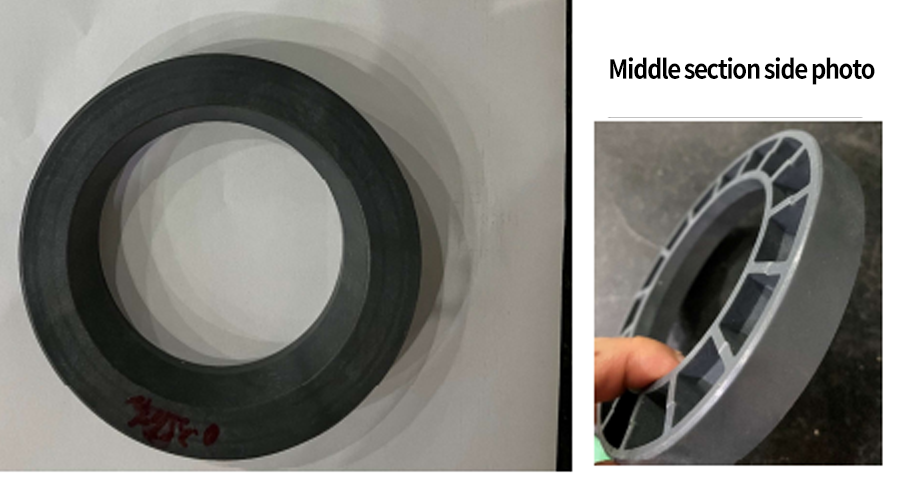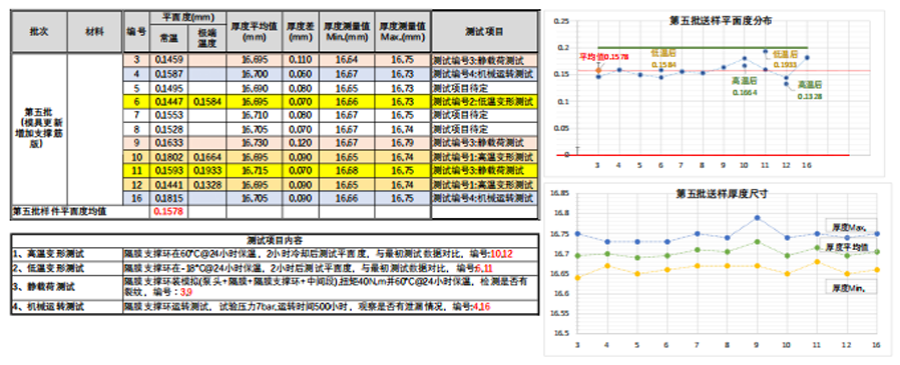
1. Project background:
1.1. Description: This is a seemingly simple improvement project that has high requirements for materials, processes and technologies!
1.2. Project source: The company's core customer, a famous American company.
1.3. Project name: Diaphragm support ring
1.4. Project requirements: This part has been imported from Germany for a long time, and it is obtained after multiple machining processes. The problem is that the imported raw materials have a long cycle, many processing steps, and high costs.
1.5. Project direction: The customer hopes that our company can change the machining process to the injection molding process through process optimization and material selection, and improve efficiency and reduce costs while ensuring the performance and quality of the parts.
2. Problem identification and analysis:
2.1. In response to the needs raised by customers, we have conducted a comprehensive review of the possible problems and risks after changing to injection molding.
2.2. Safety requirements: The product is used in a liquid with strong acid and alkali. Leakage is not allowed, so it is necessary to ensure the stability and safety of the product. In the selection of raw materials for injection molding, this requirement needs to be specially considered.
2.3. Performance requirements: It needs to withstand the predetermined pressure, and cracking and deformation are not allowed under the predetermined load pressure.
2.4. Structural requirements: The product glue position is relatively thick, and the most taboo in injection molding is the thick glue position of the product. If the glue position is too thick, it is easy for the product to shrink, have pores and deformation problems, if the glue position is too thin, there may be problems with pressure bearing. Therefore, the demand takes this series of problems into consideration.
2.5. Size requirements: The flatness requirements are relatively high.
2.6. The following picture is a picture of the original machined product:

3. Improvement strategy and implementation:
3.1. In response to the requirements raised by customers, as well as the difficulties and risks we analyzed, we consulted a large amount of information and supplier material research, and finally selected two materials, based on the original machine processing product characteristics and requirements, we designed a new 3D model and conducted finite element analysis with the customer. According to the analysis results, the customer approved our product design plan (considering technical confidentiality, some key data information is not displayed here).

3.2. After confirming the product design plan, we made a mold for this model. After sending the T1 trial mold sample to the customer for testing, some new problems were found:
3.2.1. In terms of material selection, the original material selection only considered the product's resistance to strong acids and alkalis, and did not fully consider the strength, so the product strength was insufficient, after being pressurized, the product deformed beyond the tolerance.
3.2.2. The product deformed, resulting in substandard flatness, which affected the flat sealing requirements of the parts.

3.3. In response to the problems raised by customers after testing, we have made many optimizations and improvements, including reselection of raw materials, injection molding process, compensation and optimization of product structure, etc. Finally, we were able to meet customer requirements.

4. Results and impact:
4.1. Cost: reduced by more than 40%.
4.2. Raw materials: before the improvement, raw materials needed to be imported from abroad, with a long procurement cycle, many processes, low efficiency, and troublesome raw material management. After the improvement plan, these problems were well solved.
4.3. Efficiency: improved by more than 90%.
4.4. Market: The improved process flexibility is far better than before, and the cost reduction ratio is relatively large. Customers are very satisfied.